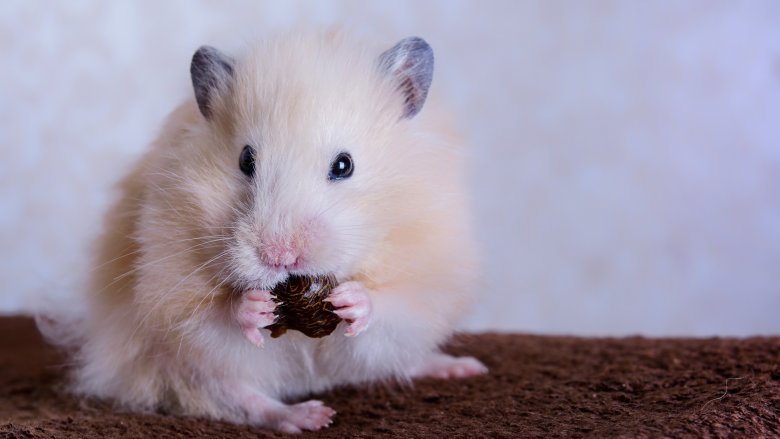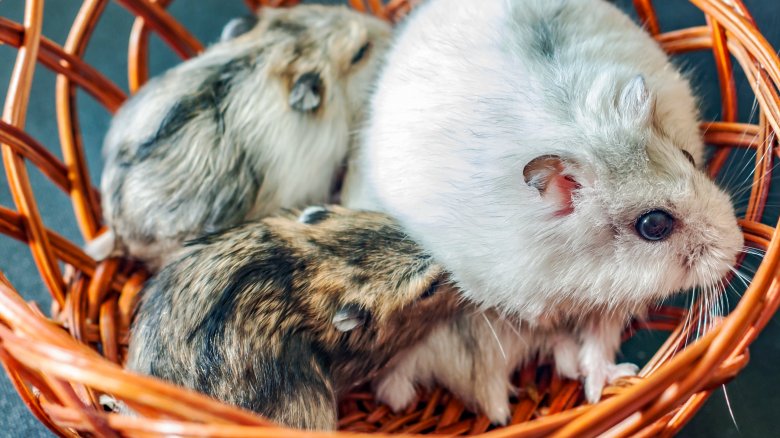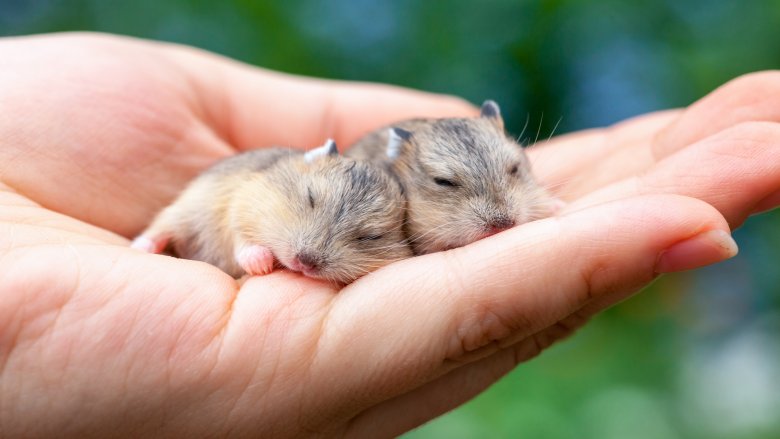The Reason Hamsters Eat Their Babies
Isn't it kind of weird and vaguely cannibalistic to refer to an offspring in the womb as a "bun in the oven?" Perhaps that's why there are so many examples of animals that eat their young — they take the bun metaphor too literally. As National Geographic details, lions, wild dogs, bears, primates, fish, amphibians, insects, reptiles, and rodents have all been known to devour their bouncing baby buns, giving a horrifying new meaning to the term "baby food." Then, there's the humble hamster, which looks like it wouldn't harm a fly but might totally swallow a fly like an old woman in a nursery rhyme if the fly looked like one of her pups.
Hamsters eat their babies when things are bad
Want to know why the hamster would swallow a "fly" it gave birth to? As with the other furry Dahmers mentioned above, sometimes it's a matter of resource scarcity. Tom Ryan of Mom.me explains that among pet hamsters, if a mother doesn't think there's enough food or water to sustain her litter, she'll start chowing down on her pups to prevent them from dying of starvation or dehydration. If a pup appears ill or deformed or someone touches it, giving the animal an unfamiliar scent, that could also spell doom for the pup and dinner for the hamster parent. Sometimes excessive stress can send a hamster into a murderous tizzy.
Humans are making hamsters eat even more babies
Biologist Mathilde Tissier studied populations of the common hamster in the wine-growing region of eastern France and noticed a distressing trend of hamsters eating entire litters of pups in the wild as well. Per Smithsonian, the behavior stemmed from drastic changes in local farming practices. The use of herbicides and pesticides, combined with a focus on crop monocultures instead of crop rotation, depleted soil nutrients and greatly reduced the variety of plants, insects and bacteria that previously helped the hamsters thrive. Instead the hamsters were stuck with corn, and the corn was giving them pellagra. A condition caused by vitamin B-3 deficiency, pellagra causes diarrhea, rashes, and in the case of hamsters, widespread cannibalism.


